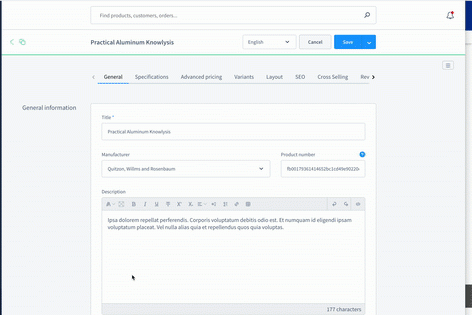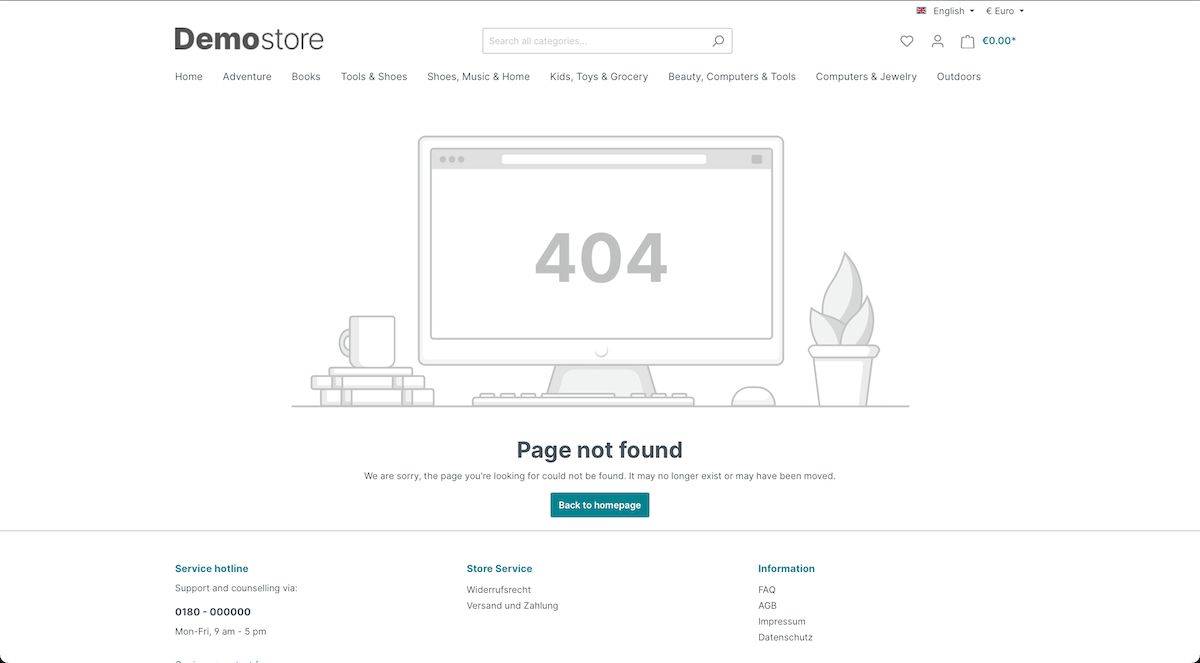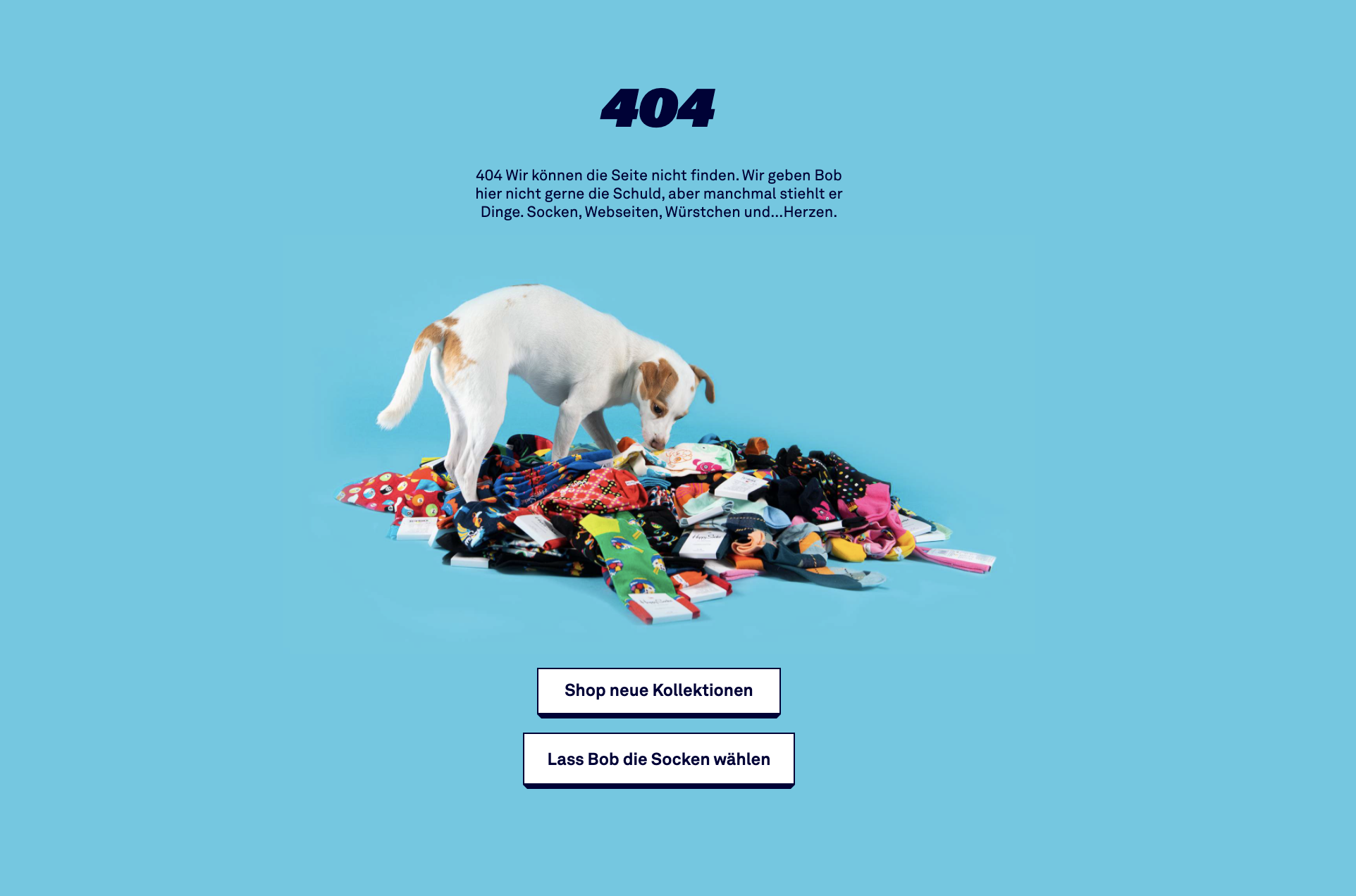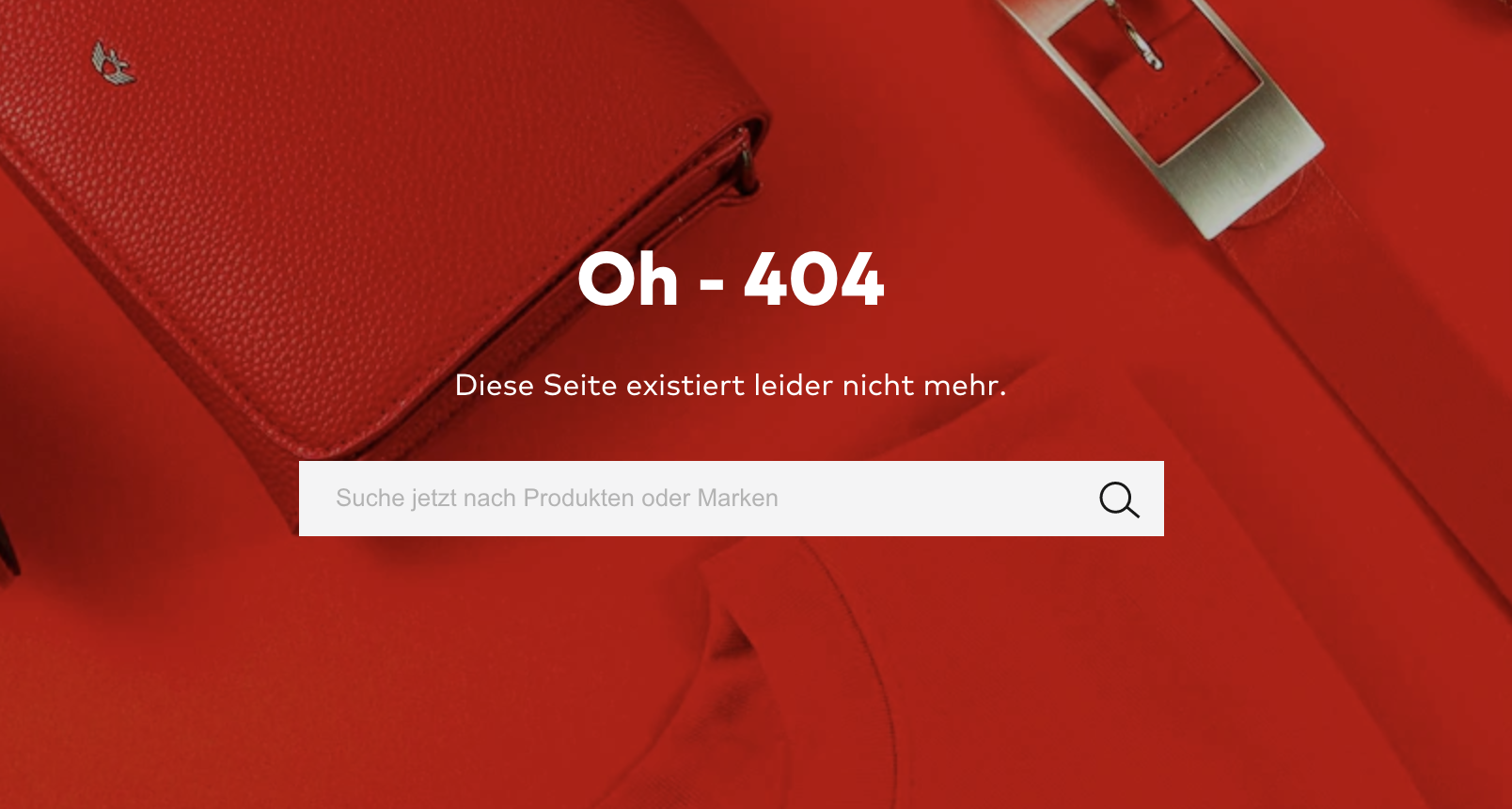You know this for sure: You click on a link and you are not redirected to the desired page, but land on an error page, which tells you that the requested content is not (anymore) available. Most of the time, this error page clearly communicates that it is a 404 error.
In this article, we will first look at what 404 errors actually are and how they come about. Then we'll take a look at how you can track, avoid and redirect them correctly within Shopware in the future, so that your SEO visibility doesn't suffer.
What are 404 errors and how do they occur?
404 errors occur when the user (or client) has requested content but cannot access it. This happens when a link is clicked which does not refer to any content (anymore). For this reason, we also speak of dead links or broken links.
A 404 error code is a standardized HTTP status code and is issued by the server if the requested content is not available. It is often referred to as 'error 404', 'HTTP 404', or '404 code'.
In most Shopware projects, 404 errors occur after a migration or changes to the article or category structure, precisely when there are deviations in the URL structure or logic.
Here is an example: Categories are no longer needed in your store, because you no longer have any products for them in your offer. However, on certain category pages there are SEO texts that contain links pointing to those obsolete pages. If a user now clicks on one of these links, a 404 page is displayed because this category no longer exists. Without a software solution that detects these broken links, it is almost impossible to manually keep on top of them.
Other possible reasons for 404 errors can be:
- Incorrect spelling of the URL: Either during the redesign of a webiste, typo in the internal linking or just a typo when typing it into the browser
- The server on which the website is hosted does not respond or a connection is broken
- The requested URL cannot be converted to an IP by DNS
- The URL entered no longer exists
As described above, dead links are often overlooked or ignored for a long time, as with limited technical knowledge tracking and fixing these errors can be difficult. Within Shopware, such a possibility does not exist by default.
However, it is very important, because these links can also be displayed in the SERPs at Google and valuable organic users, who come to your store via such a link, are directly shown an error page. This is neither for the user, nor for Google a good sign!
2. How does Shopware behave by default?
Here you should distinguish between two cases:
1. URL changes:
If you change the URL of a page of your store, for example from an article or a category page, Shopware remembers the old URL and automatically sets up a redirect to the new URL. So usually you don't have to do anything here :)

2. Deleting pages:
If you delete a page you have to be more careful. The page must not be linked within your store, nor from the outside. You may know what you have done inside your store, but at the latest you cannot manually record a link from outside. Shopware offers neither a tracking of these links, nor a function to redirect them to other pages.
Our recommendation is to take care of these 404 errors in any case, because neither your users nor Google like an onlineshop with dead pages.
3. SEO relevance of 404 errors
We know that search engines like Google and Bing pay more and more attention to user experience and rate pages accordingly. If a user encounters a 404 error while clicking through your online store, he might forgive you. The second or third time, however, the user will probably leave your online store and switch to one that works.
Also, 404 errors are not very good for search engine crawlers, because this is a sign that the store is not very well maintained and updated. Especially if the pages are placed in the sitemap and placed in the search results. Google is quite rigorous, first your online store will be placed further down in the search results and if there are a lot of 404 errors, there are also cases where Google has taken the entire page out of the index. Thus, the worst for you as a store owner occurs: Your valuable organic visitor numbers decrease.
4. How to identify 404 errors in shopware
Now that we know how important it is to react to 404 errors, let's take a look at how you can become aware of them and redirect the corresponding links to (still) existing pages. There are numerous free tools for this, which will alert you to errors in the internal linking as well as to external, dead links.
Almost every website and online shop operator works with this tool. Here you are directly at the source, all 404 errors detected by the Google Bot, you can view directly here. If you have fixed the errors afterwards, you can point them out to Google directly within the Search Console and Google will send the crawler again in the following days or weeks.
With the help of Search Console you can also identify other technical problems of your store, which we will not talk about here.
You can find a detailed documentation here.
Okay, now we are aware of the errors. You should check for errors at least every 14 days, but how can you fix them as easily as possible within Shopware, or redirect the corresponding links to working pages?
Plugin: SEO Error pages and redirects (404, 301, 302 und 410)
There are numerous plugins in the Shopware Community Store that let you set up redirects. We have intensively dealt with the question of how this work can be made easiest for every store owner.
The result is a super helpful plugin: This tracks all 404 errors for you and you can then set up redirects directly. All in one user interface and all directly in Shopware. Switching between Google Search Console and the Shopware Admin Interface is no longer necessary.
Try it out in a free trial:
SEO Error pages and redirects (404, 301, 302 und 410)
Never lose SEO rankings because of 404s anymore! Our plugin is a must-have for every store if you want to deal professionally with redirects in order to not longer lose SEO rankings. In webmaster tools like Google, these pages are displayed with a time delay, they have to be exported and imported to shopware elaborately, in order to be able to finally set redirects. But not anymore. We talked a lot to our customers and we came out with a solution :) Using our plugin you get an overview of all URLs that have run into errors, you will be able to edit them in a clear interface one after the other. DIRECTLY in Shopware, without leaving your admin interface. Setting up redirects has never been easier :)
5. That's why you should personalise your 404 page
Shopware offers you a standard 404 page, which is displayed as soon as a dead link is called. This is already better than displaying a server generated page :) However, with a personalized 404 page you can get much more out of this unpleasant situation. As already described, it should always be your goal to create a pleasant user experience. Now let's imagine that we call a dead link and get the following (default page in Shopware) displayed:

For us, the journey in the online store has come to an end there. We can navigate further, but directly on this page we can do nothing more than return to the homepage. But with a few simple adjustments you can motivate the user to stay and browse further. For example, happysocks.com tries it with a gif and a generator, which randomly calls a product from the assortment:

A very creative idea, in my opinion. This motivates to stay and give the online store one more chance. It is noticeable that especially the "smaller" online store owners make an extra effort with the design, for example korodrogerie.de, here they show us (probably) best-selling products, as the chance is highest to view them:

Aboutyou.de, on the other hand, only displays a search bar, which is already present on the page. However, this is a very good option if you have a very wide range of products and you cannot draw any conclusions about the actual intention of the user:
